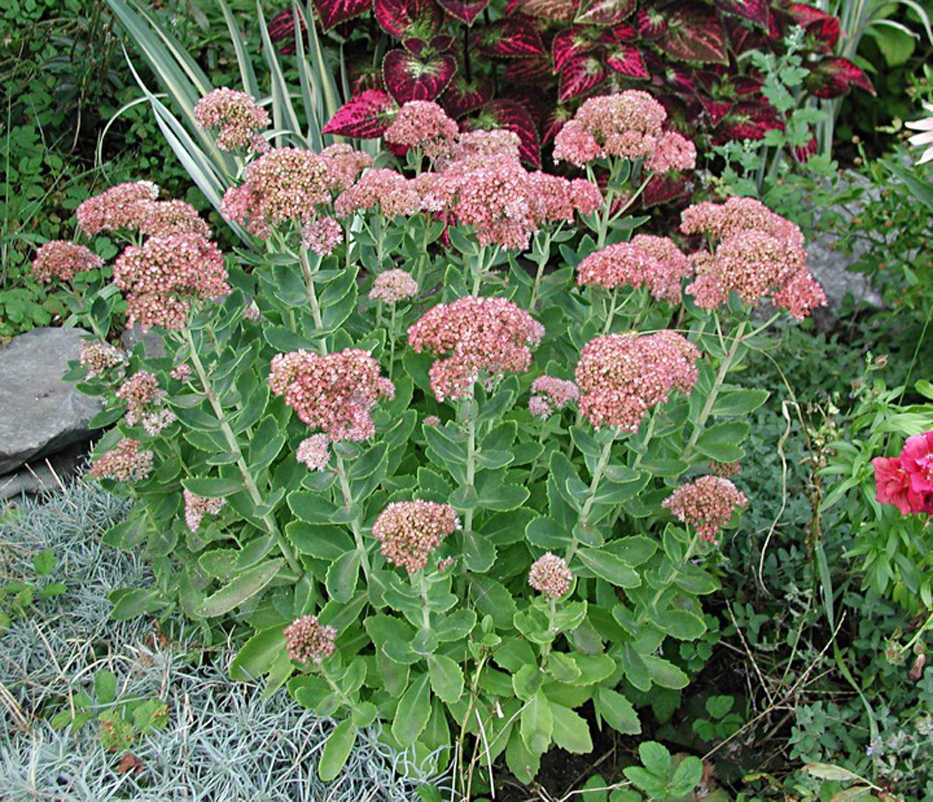For some visual joy in autumn, plant Autumn Joy sedum.
The plants’ domed flower clusters now smile skyward like heads of pink broccoli. Autumn Joy is, understandably, a stalwart of the late summer and fall flower garden.
The flowers adorn the plants for weeks and weeks, not frozen in time like the more common flower of autumn, ‘mums, but constantly changing. The initially green buds first open to pink, then the blossoms shade to rose, on to salmon bronze and finally to coppery red.
The flowers make a nice companion to the golden yellow flowers of Goldsturm daisies, the lavender blossoms of Frickart’s aster or one of the perennial, blue-flowered sages. For something more electric, pair Autumn Joy with the chartreuse leaves of Goldmound spiraea. Completing the picture are butterflies that play over the Autumn Joy blossoms and alight periodically to sip nectar.
Although most dramatic in late summer and autumn, Autumn Joy is also showy other times of the year. And the flower show doesn’t end with that coppery red because the flowers hang onto the plants, drying, into and through winter.
While the flowers are still fresh, plunk them into vases to enjoy indoors.
Autumn Joy is a succulent, as are cactuses, and its evergreen, fleshy, pale-green leaves look perky year-round, no matter what the weather.
As a succulent plant, Autumn Joy thrives in abundant sunlight. Succulents also tolerate drought; no need to water this perennial — ever.
Wet weather does the plants no harm as long as the soil is well-drained. That said, even if the roots were to rot in wet soil, the tops, including the flowers, would live on for a long time, the leaves getting along just fine, the flowers carrying on as if nothing were the matter. Eventually, though, wet soil will do in the plants.
The way to ensure good soil drainage is to select a naturally sandy site for the plants or improve the drainage of an existing soil. Mixing plenty of organic materials, such as woods chips, compost or leaves keeps water flowing down through a soil. An alternative is to bring roots up above moist soil by planting on top of a mound, or in raised beds built up with some sandy soil.
Besides it year-round good lucks, Autumn Joy can be considered among the best perennials because it is practically indestructible but not invasive; rarely needs to be rejuvenated by being dug up and having only its young portions replanted; and is not particularly bothered by pests. Even deer tend to leave this plant alone.
Maintenance requirements are practically nil. Just tidy up the plant by removing spent flower stalks in late winter. If you want to multiply your own holdings or start some plants from a neighbor’s plant, Autumn Joy is also quick and easy to propagate. Stems or even just leaves poked into well-drained soil will take root. Or dig out and replant a piece of plant taken from the edge of an established clump.
Since its introduction from Japan in 1955, this succulent has become popular and is widely planted. If you don’t yet have any, look around and experience some Autumn Joy.

